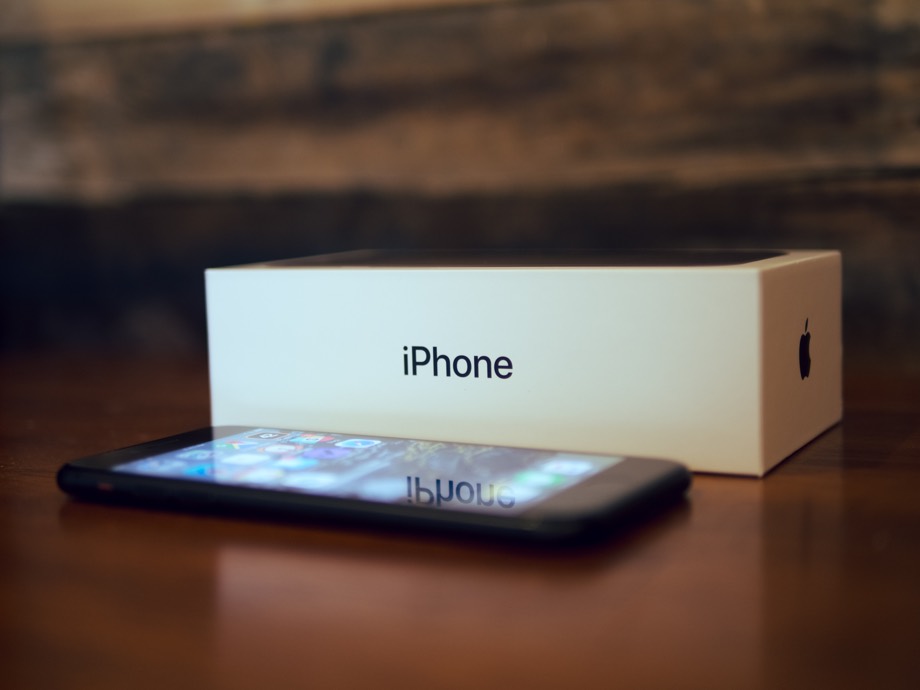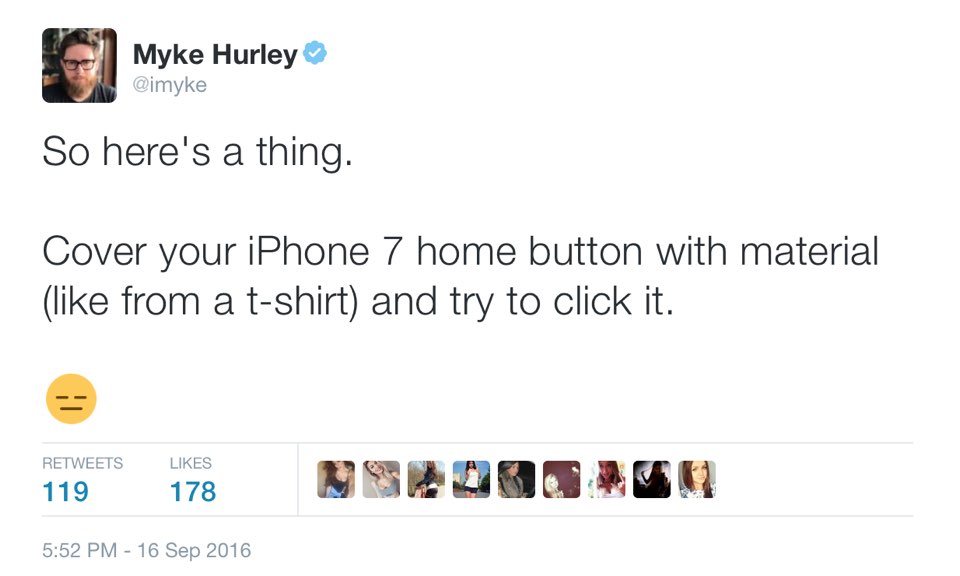
It was 2:00 o’clock in the morning, and I was sitting up in bed, barely awake enough to keep refreshing the Apple Store app.
While I was somewhat concerned that the iPhone 7 might actually sell out in the middle of the night, in truth I was mostly awake at that hour because it’s tradition.
It wouldn’t be New iPhone Season without having to wait in a line of some sort, even if it’s a virtual one in the middle of the night.
One week later, my matte black iPhone 7 arrived. It sat at my house for a couple of days because my wife and I were in the hospital that weekend having our third son.
This is my 9th iPhone.
(I skipped the 3G because it was far uglier than the original and so I didn’t upgrade until the 3GS came out. And I have bought the newest iPhone every year since.)
Like many of you have probably done, I used to sell my previous model iPhones for more than it cost me to upgrade to the new one (thanks to my partial subsidies on my AT&T contract). Thus, I’d actually make a little bit of money each year — enough to “upgrade for free”, basically…
Then my wife got her first iPhone, and we started upgrading on a tick-tock schedule with AT&T. In even number years it was my contract’s turn to upgrade through subsidized pricing, and in odd number years it was her contract’s turn.
Whoever’s contract was due for the subsidized pricing would use that line to buy the newest iPhone. Then, I’d give her my “old” iPhone and I’d get the new one.
But that whole upgrade process changed last year with the advent of Apple’s iPhone Upgrade Program, et al.
AT&T (and Verizon, too, I think), are working hard to move away from subsidized upgrades and instead offering their “lease to own” options. AT&T calls theirs “AT&T Next”; Verizon calls it their Annual Upgrade Program.
With all of these programs you are effectively getting an interest-free loan to buy your iPhone over the course of 24 months. And then, if you want to upgrade every year the new iPhone comes out, you just trade in your current phone for the new one.
It’s the access over ownership model. And I think it makes sense for folks who simply want the latest iPhone each year. So I finally signed up, and for first time ever, my wife and I both upgraded. (Rose Gold 7 for her, matte black 7 for me.)
The iPhone 7 in Matte Black
First, let’s address the former elephant in the room: My former iPhone 6s Plus.
Last year I bought the gargantuan. The Hercules. The Titanic. The giant. The iPhone 6s Plus.
It took some time to get used to the massive device, but I did eventually acclimate. By far and away, what I loved most about the Plus was its larger screen and the better battery life.
Once it became natural for me to use both hands when dealing with the Plus, it stopped being quite so awkward a device and the advantages of the larger screen were pretty great.
However, as awesome as it was to have the larger screen, the better battery life, and the nicer camera… it just wasn’t worth the tradeoff for the unwieldy size. More often than not I found myself frustrated by my inability to wrangle the phone with one hand and just how clumsy I felt when trying to use it.
After a good year-long run with the iPhone 6s Plus, I’ve returned to the regular size iPhone. And I have no regrets.
There are, I believe, a few reasons it wasn’t too terrible of a “downgrade” to move from the 6s Plus to the “regular” 7.
Basically, the battery life of the iPhone 7 is improved enough that for my own day-to-day usage it’s just as good as it was on my iPhone 6s Plus.
According to Apple’s specs for the iPhone 6s Plus and iPhone 7, the former gets up to 12 hours of internet usage on LTE or Wi-Fi and the latter gets the same if not slightly better.
Secondly, my iPhone 7 now has in-body image stabilization just like my iPhone 6s Plus had. And since the camera optics in the iPhone 7 are improved over last year as well, I actually have a better camera.
So, in the end, the only thing I “gave up” was screen size. And that is exactly what I wanted to give up.
Needless to say, I’m glad I went back to the regular sized iPhone.
Additional Miscellany
- The new home “button”. It took a few days, but I’ve gotten used to the new “button”. But it doesn’t feel like a button, really. It feels like the whole front of my iPhone is on a hinge, and I’m pressing the entire front bezel of the phone down.
There is also this issue where you can’t press the button with gloves on…
But, at the same time, if you had gloves on you couldn’t operate the home screen anyway. So what do gloves do other than turn on the screen? Well, with raise to wake and the side buttons — is there truly a loss of usability? There’s a loss of functionality, yes. But is there a loss of usability?
- The Camera Bump: The iPhone camera bump is probably here to stay. At least for a few more years. Now that they’ve had it for 3 years in a row, it’s become “accepted”. Heck, in this year’s marketing material Apple is no longer trying to hide the bump, they are showcasing it front and center.
The advantage of keeping the bump is that it gives the iPhone engineers so much more space to work with for improving camera optics and lenses. And, well, if the iPhone is anything it’s a camera.
- Matte Black: Three cheers! I is so great to have a black phone instead of that Space Gray. I went with the Matte Black over Jet Black because I think the former looks better and because I knew it wouldn’t get fingerprints all over it.
However, the extra grip you get on the glossy finish of the Jet Black is appealing. And while the matte black iPhone is a bit less slippery than 6 and 6s were, it’s still slippery-ish. Oh well.
- Future Colors? With the process that creates the Jet Black iPhone, I wonder if Apple will introduce new colors in the future that have the same glossy, grippy finish as the Jet Black? Like a 5c-esque color lineup, but made of aluminum.
* * *
Year over year, the iPhone continues to be my favorite gadget of all time.
The best reasons to upgrade (in the author’s order of preference) are:
- New matte (and Jet) black colors
- Better camera (with IBIS for the “regular” size iPhone)
- Better battery life
- Stereo speakers that are also louder
- Water Resistance
